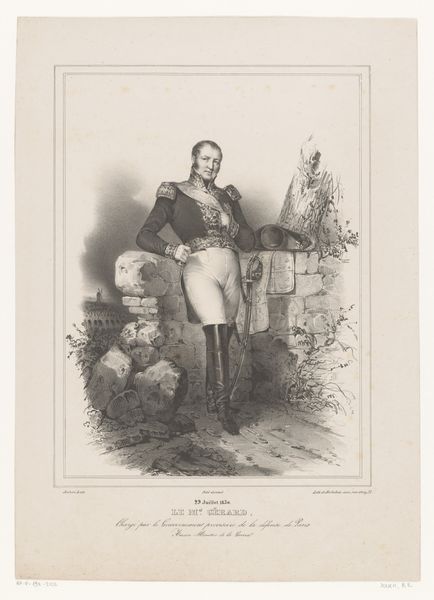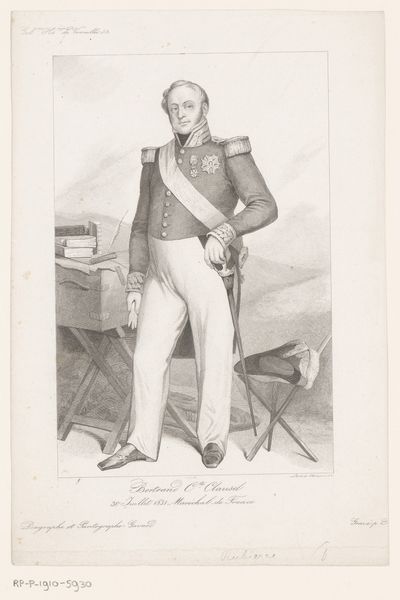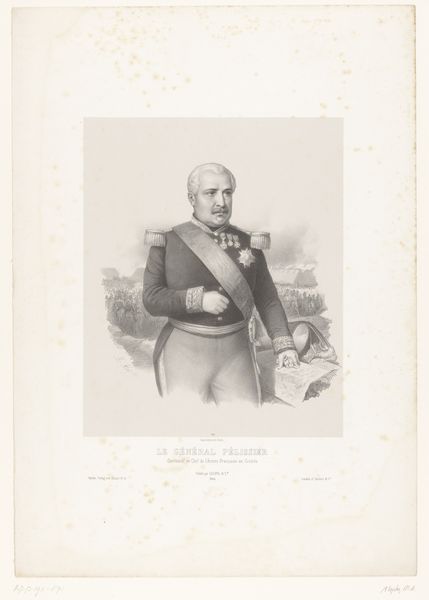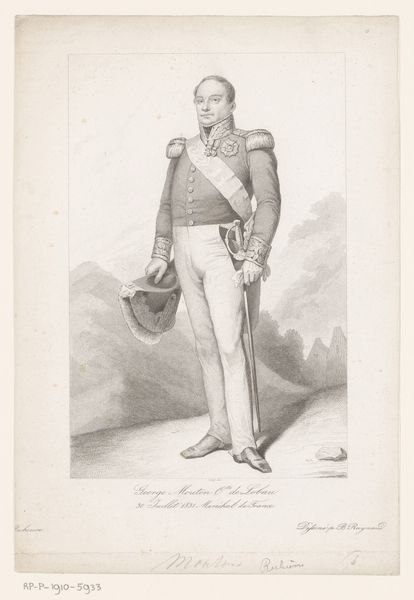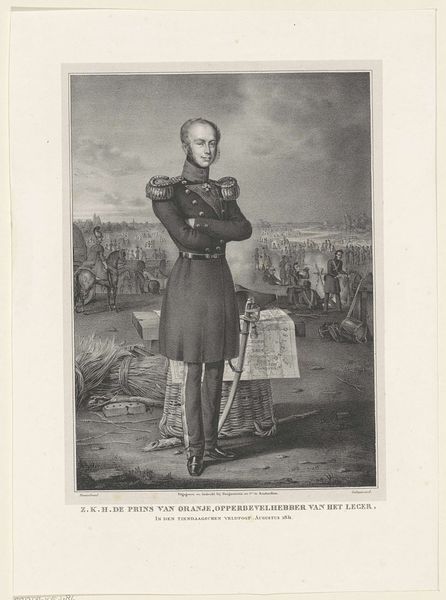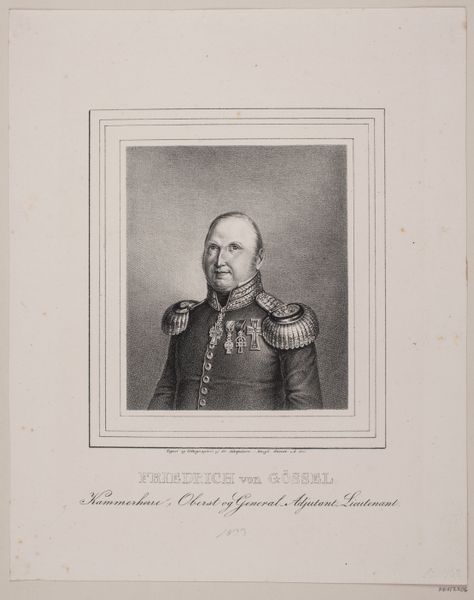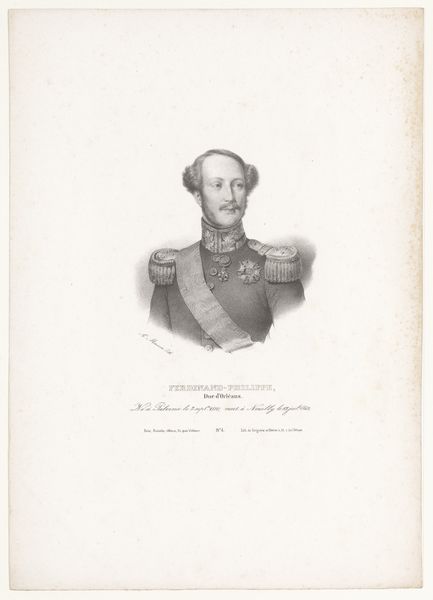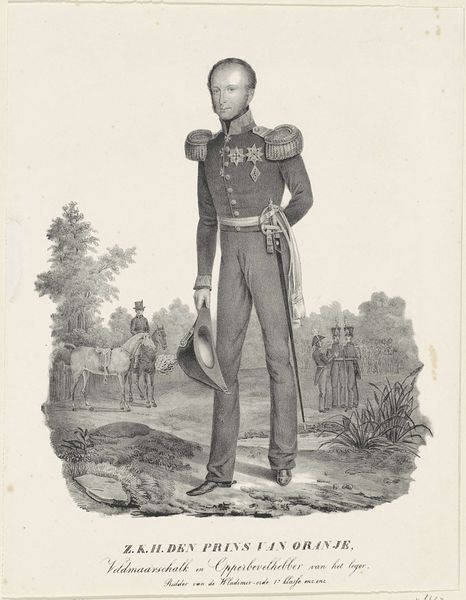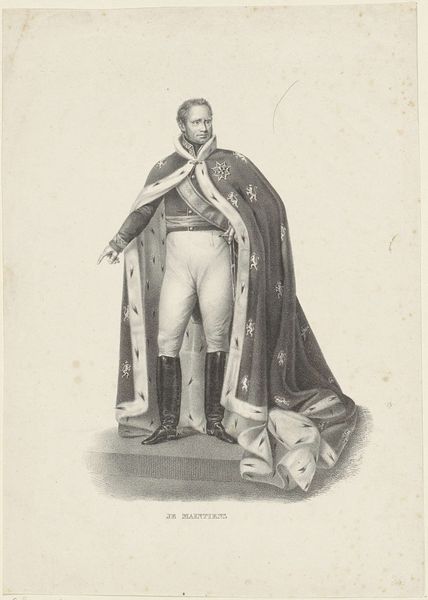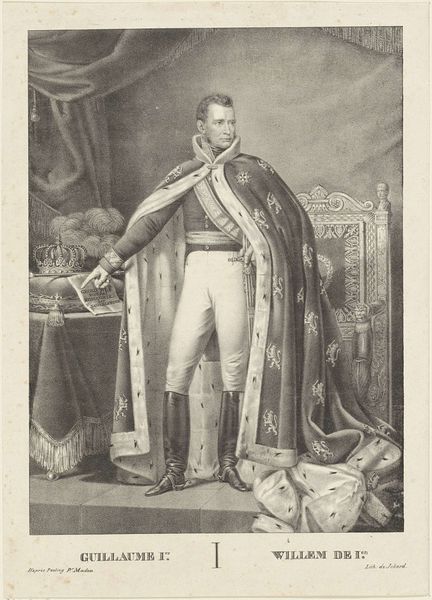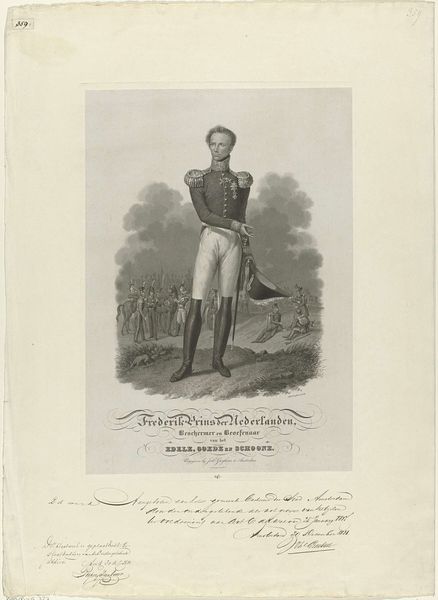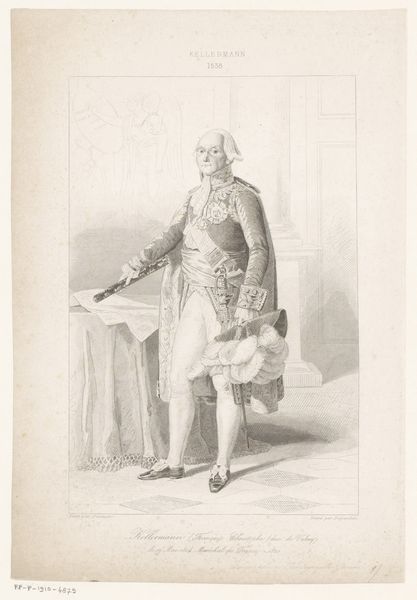
print, pencil, engraving
#
16_19th-century
# print
#
pencil sketch
#
pencil
#
pencil work
#
engraving
#
realism
Dimensions: height 265 mm, width 186 mm
Copyright: Rijks Museum: Open Domain
Curator: This is a portrait of Édouard Mortier, created between 1838 and 1841 by Edme Jean Ruhierre. The piece employs engraving and pencil work on paper. Editor: My first thought is about the stoicism radiating from the portrait—an almost statuesque representation of military authority, wouldn't you say? The man and the symbolic trappings of war surrounding him all combine to communicate composure and control. Curator: Indeed. It is a fascinating visual construction that fits within the grand tradition of military portraiture. Ruhierre captures Mortier, who became Marshal of France in 1804, with an almost calculated air of authority. The choice of rendering Mortier in print aligns with the need to widely circulate and commemorate prominent figures of the era. It's an intentional dissemination of power. Editor: It is so much more than a portrait of an individual, the sash, sword, and cannons carry a historical weight and evoke a particular vision of masculine power that prevailed at that time. Curator: The sword is a classic Napoleonic-era symbol of military might, isn't it? This element and the cannons situate Mortier within a context of warfare and leadership, underscoring his contribution to French military history. And the strategic choice of this imagery definitely worked towards shaping and manipulating public perception. Editor: Yes, and there's also that interesting little green sprig there to his left; at first, it feels out of place. Considering Mortier’s tragic death – he was killed by an assassination attempt, along with several others, years before this image was created - the plant takes on a completely new meaning; one that might not have been the first intention but instead one we view through a lens of both life and untimely death. Curator: Interesting point about Mortier’s death and the symbolic presence of this plant; this portrait now reads not only as a historical document and representation of authority, but as a reflection on legacy. What lingers and what perishes. Editor: Right. Images speak through their silences. I can’t help but ponder what nuances of Mortier's personal character remain invisible to us because they are masked behind the carefully arranged symbols of power and strength. Curator: The layers within these seemingly simple portraits can be so deceiving. I hadn't initially thought of it that way, but your interpretation adds such depth to the social history it represents. Editor: That is why images continue to compel and provoke us, decade after decade.
Comments
No comments
Be the first to comment and join the conversation on the ultimate creative platform.
